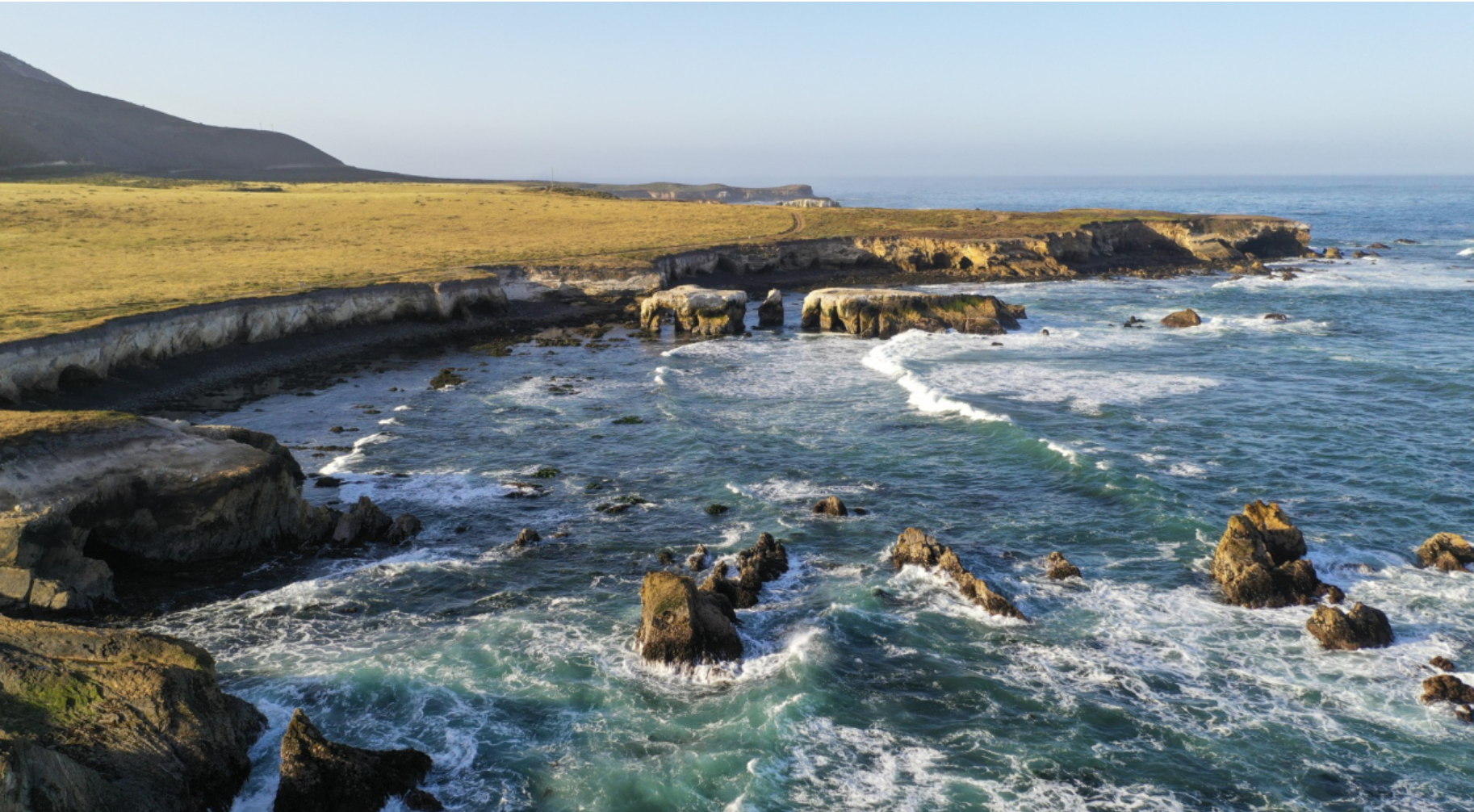Chumash Heritage Marine Sanctuary: A Great Asset
Most of 110,000 Commenters Agree

Thirty-two years ago, I helped lead the citizen campaign to establish Monterey Bay National Marine Sanctuary to get permanent protection from offshore oil. But we got a bonus. The sanctuary team works to protect its habitats, including an octopus garden, education and outreach including to underserved communities, and work with partners to conduct world-renowned ocean research.
If designated, Chumash Heritage National Marine Sanctuary would cover waters off San Luis Obispo and northern Santa Barbara County, and last year 110,000 comments were submitted to the federal government mostly in favor of the largest boundary option. A question under consideration is how much area would be excluded from sanctuary protection to accommodate undersea transmission lines and substations for a 376-square-mile offshore wind area north and west of Cambria. Sanctuary status can, and I’d argue should, be granted to the excluded area after that infrastructure is established.
Chumash Heritage National Marine Sanctuary would be the West Coast’s sixth national marine sanctuary along with Olympic Coast, Cordell Bank, Greater Farallones, Monterey Bay, and Channel Islands sanctuaries. It would add protection between Monterey Bay and Channel Islands, and its team would work with representatives of Indigenous peoples who have stewarded natural assets in this area for thousands of years. Like other sanctuaries, it would be a great asset.
Congress approved the national marine sanctuaries act in 1972 in the wake of the 1969 Santa Barbara oil spill, and its first test was the 1974 establishment of the USS Monitor National Marine Sanctuary, which stewards a Union Navy ironclad sunk during a Civil War battle off the East Coast. Today, 15 national marine sanctuaries and two marine national monuments cover 620,000 square miles of ocean and Great Lakes, supporting the resilience of waters that cover two thirds of our planet, provide half the oxygen we breathe, and absorb excess atmospheric carbon. The marine sanctuaries and monuments cooperate with state and agencies, nonprofits, and volunteers to, for example, protect water quality. A great example is the work Monterey Bay National Marine Sanctuary does with farmers to reduce agricultural runoff, which received an award from California governor Arnold Schwarzenegger.
Monterey Bay National Marine Sanctuary protects 6,094 square miles off 276 miles of shoreline from southern Marin to northern San Luis Obispo counties. It includes the Monterey Bay Submarine Canyon, Elkhorn Slough, and Davidson Seamount 75 miles west of San Simeon. Its habitats include 36 species of marine mammals, more than 180 species of seabirds and shorebirds, and at least 525 fish species. It has an Advisory Council with representatives from the community, government, and specific interests, including seats for commercial and recreational fishing. Its staff and volunteers undertake education and outreach, research, and resource protection. Here are just a few examples:
• The Sanctuary Exploration Center in Santa Cruz and Coastal Discovery Center in San Simeon serve tens of thousands of visitors per year. In 2022, the two sites served 946 students with field trips, plus 156 with class programs, and another 555 with virtual programs.
• Sanctuary researchers and partners are uncovering the wonders of the “Octopus Garden” which have been shared worldwide, a collaboration with amazing results. In another example, the sanctuary and the Monterey Bay Aquarium Research Institute have worked on growing deep-sea coral, which has aided in the recovery from the Deepwater Horizon spill.
• West Coast marine sanctuaries participate in the Whale Disentanglement Team, which had 40 trained volunteers and saw 13 rescue missions conducted in 2022. Work on crab gear that prevents entanglement continues, as does the Protecting Blue Whales & Blue Skies initiative, wherein large vessels voluntarily slow down to protect whales from ship strikes and protect air quality.
• Sanctuary staff, trawl fishers, and conservation organizations negotiated Essential Fish Habitat Conservation Area modifications in 2013, which were approved by the Pacific Fishery Management Council in 2018 and finalized in 2020. This action both reopened areas closed to trawlers and closed areas important to ecosystem protection. Nearly 2 billion pounds of fish, valued at $1 billion in 2022 dollars have been landed at area ports and Morro Bay since designation 31 years ago. The sanctuary itself does not regulate fishing but supports ecosystem health.
• The sanctuary’s value for tourism is its wildlife, such as the northern elephant seals at Piedras Blancas, and the fact that it’s protected. Visit Santa Cruz, for example, promotes sanctuary status. Earlier this year I was part of a TV spot for a Santa Cruz hotel that aired in Los Angeles: the topics were surfing, surf icon Jack O’Neill, and the sanctuary. Whale watching continues to promote sanctuary status as something special that our waters offer.
• A maritime heritage program facilitates study of shipwrecks and cultural sites, such as the SS Montebello off Cambria and the USS Macon off Big Sur. The Chumash Heritage sanctuary would catalogue sacred Indigenous cultural sites.
For 32 years, Monterey Bay National Marine Sanctuary has worked with partners to provide protection, education and outreach, and research. So would Chumash Heritage National Marine Sanctuary. This is good news for ocean protection, biodiversity, and the fight against climate change.
Dan Haifley is secretary of the Monterey Bay National Marine Sanctuary Foundation Board and was director of Santa Cruz-based Save Our Shores, and O’Neill Sea Odyssey. He wrote a regular ocean column in the Santa Cruz Sentinel for 11 years and can be reached at dan.haifley@gmail.com.
